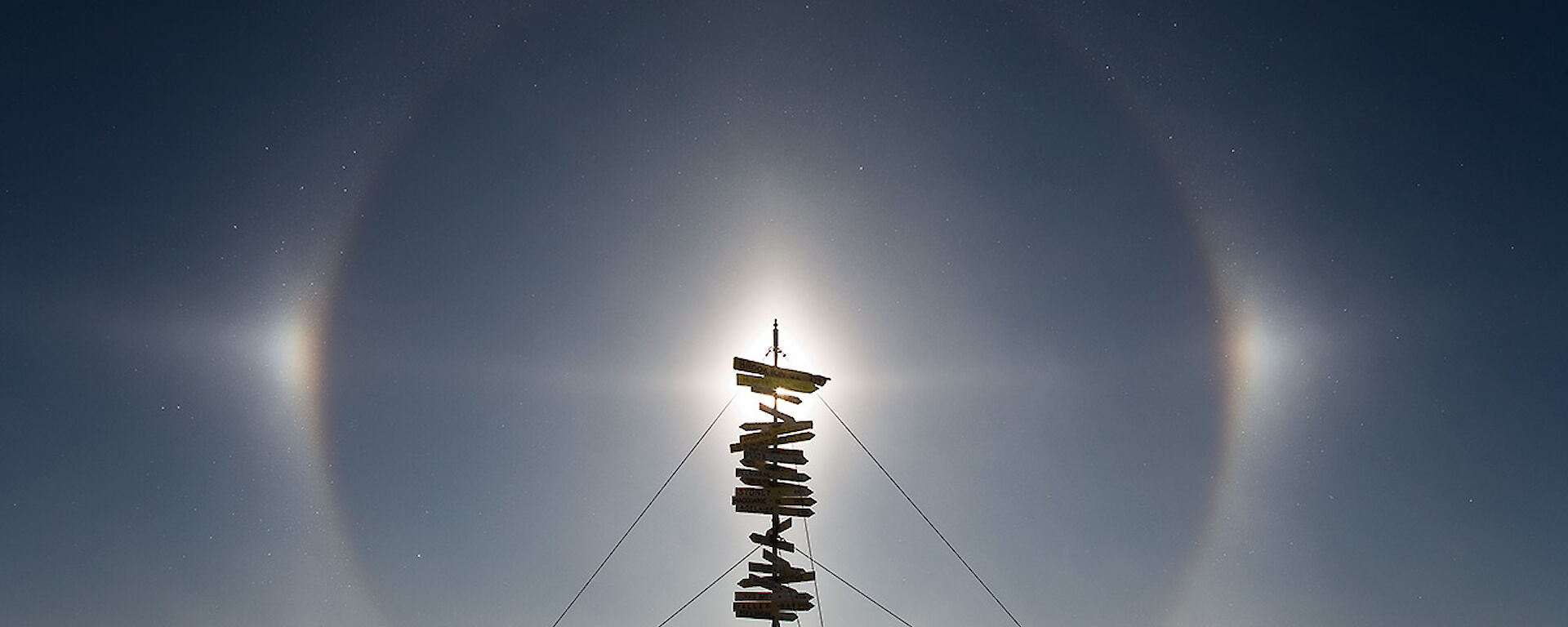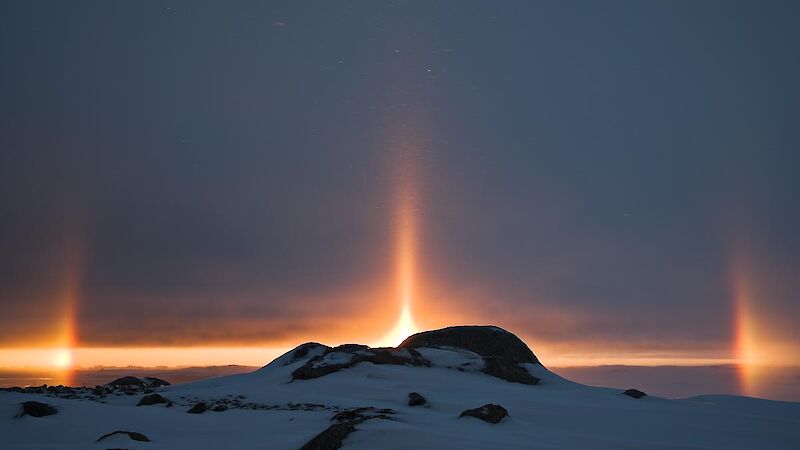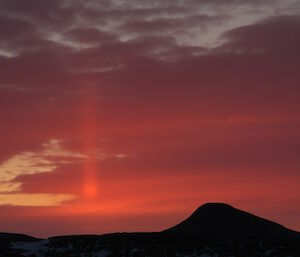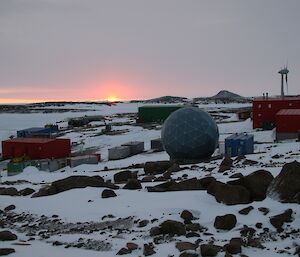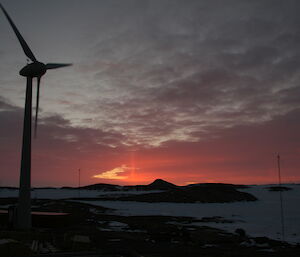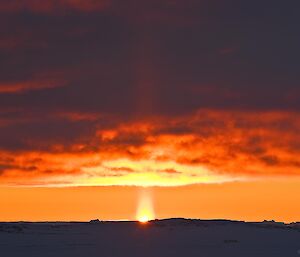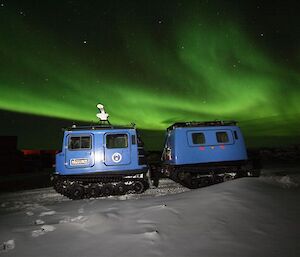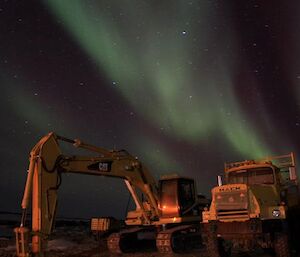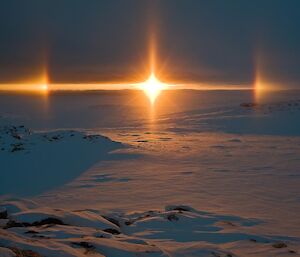Mid-winter is a time of celebration in Antarctica, as expeditioners say goodbye to 24 hours of darkness, or near-darkness, and welcome the gradual return of the sun. Rather than complete and continuous darkness, Australia’s three Antarctic stations experience periods of twilight, where the sun sits just above or below the horizon and which, under the right atmospheric conditions, produces some spectacular light shows.
This mid-winter, expeditioners were treated to displays of sun dogs, sun pillars and solar halos.
Solar halos encircle the sun and are generally caused by the reflection and refraction of light by ice crystals falling through the atmosphere. These crystals can be in cold cirrus clouds located high (5–10km) in the troposphere or, under very cold conditions, close to the surface.
A sun dog, or ‘parhelion’, is a bright circular spot appearing on a solar halo. Often two sun dogs, one on each side of the sun, appear simultaneously. They are also formed by the reflection or refraction of sunlight by small ice crystals in clouds.
A sun pillar is a vertical shaft of light extending upward or downward from the sun, which forms when sunlight reflects off the surfaces of falling ice crystals associated with thin, high-level clouds. The hexagonal plate-like ice crystals fall with a horizontal orientation, gently rocking from side to side as they fall.
Casey expeditioners say they were lucky to witness the light show, as heavy cloud or icebergs occasionally block their view of the mid-winter sun and when the sun sets, auroras appear to illuminate the stations.

